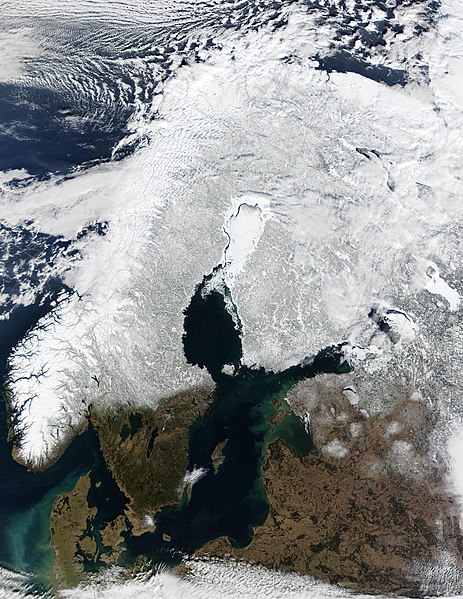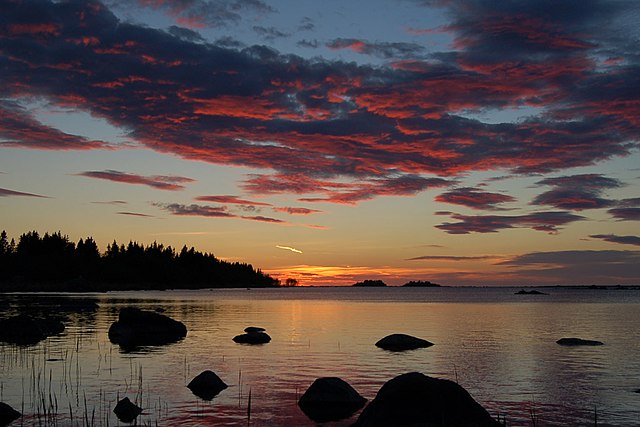The Bothnian Bay or Bay of Bothnia is the northernmost part of the Gulf of Bothnia, which is in turn the northern part of the Baltic Sea. The land holding the bay is still rising after the weight of ice-age glaciers has been removed, and within 2,000 years the bay will be a large freshwater lake since its link to the south Kvarken is mostly less than 20 metres (66 ft) deep. The bay today is fed by several large rivers, and is relatively unaffected by tides, so has low salinity. It freezes over each year for up to six months. Compared to other parts of the Baltic, it has little plant or animal life.
The rocky shoreline of Ohtakari, in the southeast of the bay
Satellite image of Fennoscandia with sea ice covering the Bothnian Bay (white region in center)
A cargo ship approaching the Vihreäsaari harbour in Oulu, Finland, while the Bay of Bothnia starts to freeze for the winter
The ice road between the Hailuoto island and the mainland
The Gulf of Bothnia is divided into the Bothnian Bay and Bothnian Sea, and it is the northernmost arm of the Baltic Sea, between Finland's west coast and the northern part of Sweden's east coast. In the south of the gulf lies Åland, between the Sea of Åland and the Archipelago Sea.
Satellite image of Fennoscandia in winter. The northern part of the Gulf of Bothnia, the Bothnian Bay, is covered with sea ice.
Depiction of the gulf, circa 1830
June 2006 view of the Gulf of Bothnia in Finland.
Pilot station and lighthouse in the Hailuoto Island, a municipality island at the Bothnian Bay near the city of Oulu







